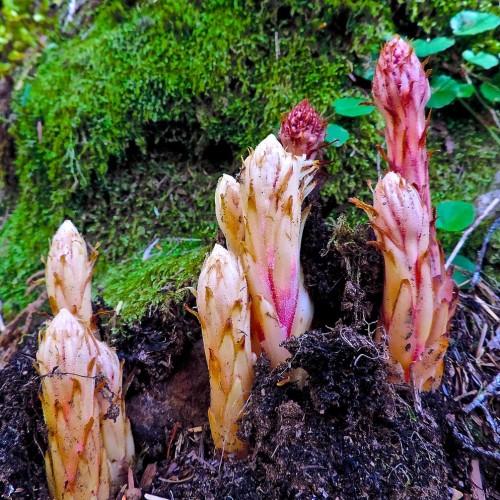
Sugarstick
Allotropa virgata
Also Known As - CandystickWatering:
Minimal
Hardiness Zone:
Flowers:
Flowers
Sun:
Sun
Leaf:
Yes
Growth Rate:
Low
Poisonous To Humans:
Yes
Poisonous To Pets:
Yes
Salt Tolerant:
Yes
Invasive:
Yes
watering
The Tall Swamp Onion (Allium validum) likes moist soil, making it important to keep its soil evenly damp. It prefers full sun, but can also tolerate partial shade. When watering the Tall Swamp Onion, it is important to water it deeply and regularly, which means about once a week, adding enough water to penetrate the soil 4-6 inches. During particularly hot or dry periods, watering will need to be more frequent. Make sure to check the soil moisture each time before watering, however, as overwatering can be just as detrimental to the plant as underwatering.
sunlight
Tall Swamp Onion (Allium validum) requires full sun to partial shade for optimal growth. It thrives in moist soil with medium to wet soil moisture and does best in 6-8 hours of sunlight per day. It can handle some shade, but the leaves may become spindly and flowers will suffer from lack of light. In the northern part of its native range, it may require more sun than in the southern part. When grown in shade, it will need supplemental lighting of at least 4 to 6 hours per day. In regions of intense sunlight, it may even require some shade at certain times of the day, such as during the hottest part of the day in the summer, to prevent wilting and leaf burn.
pruning
The Tall Swamp Onion (Allium validum) should be pruned in the mid-summer once the plant has flowered. Pruning should only be done where necessary to remove dead flowers and other damaged tissue, ensuring the plant remains healthy. When pruning, only trim back the flower stalk, and be sure to cut the flowers and buds at their base. Do not cut off any leaves or larger sections of the plant. As Tall Swamp Onions are bulb-forming plants, direct pruning may reduce flower production each season, so minimizing pruning is important.
